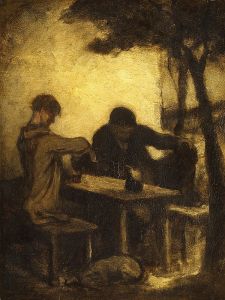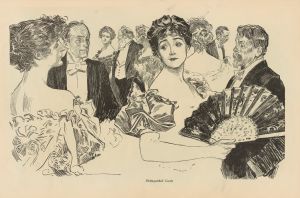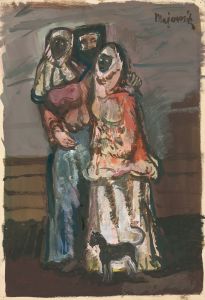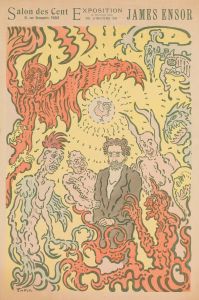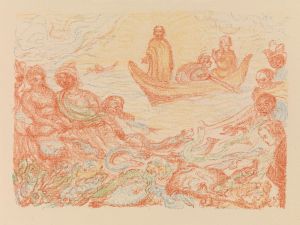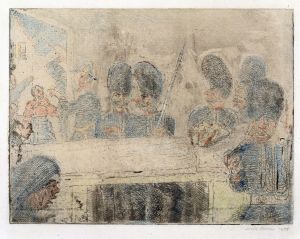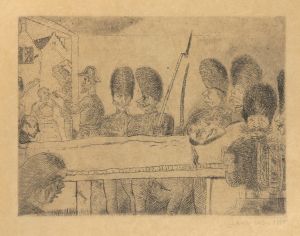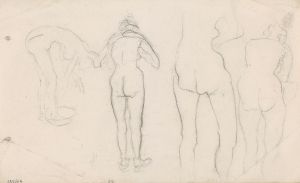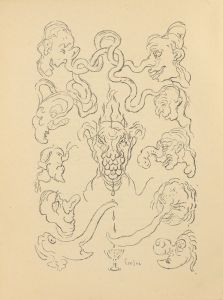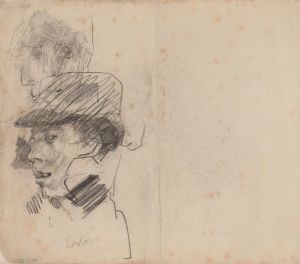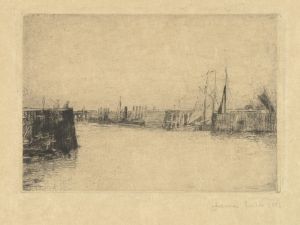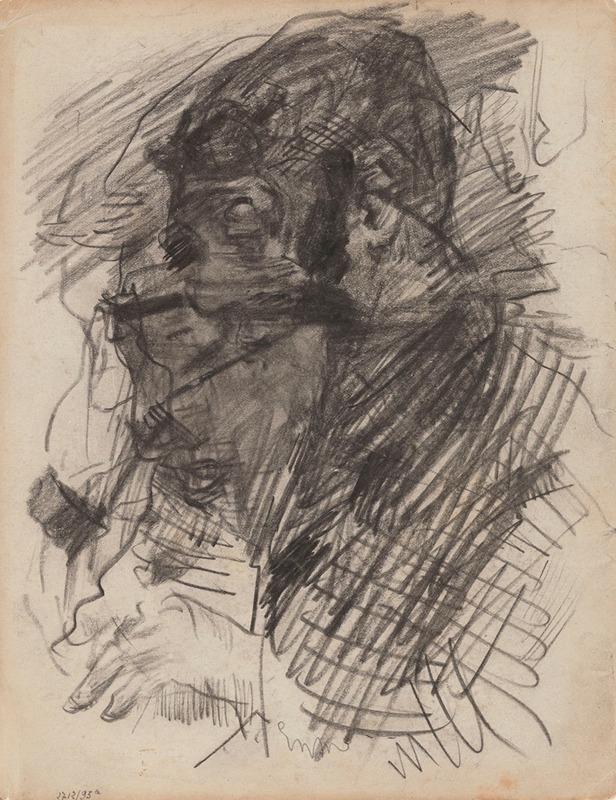
Heads
A hand-painted replica of James Ensor’s masterpiece Heads, meticulously crafted by professional artists to capture the true essence of the original. Each piece is created with museum-quality canvas and rare mineral pigments, carefully painted by experienced artists with delicate brushstrokes and rich, layered colors to perfectly recreate the texture of the original artwork. Unlike machine-printed reproductions, this hand-painted version brings the painting to life, infused with the artist’s emotions and skill in every stroke. Whether for personal collection or home decoration, it instantly elevates the artistic atmosphere of any space.
James Ensor, a Belgian painter known for his avant-garde and often macabre works, created the painting "Heads" during a period when he was deeply engaged with themes of existentialism and the grotesque. Ensor was born in 1860 in Ostend, Belgium, and spent most of his life there, drawing inspiration from the coastal town's vibrant atmosphere and its carnival traditions. His work is often associated with the Symbolist movement, although it also contains elements that would later be seen as precursors to Expressionism and Surrealism.
"Ensor's "Heads" is a striking example of his fascination with the human face and the emotions it can convey. While specific details about the painting "Heads" are scarce, Ensor's broader body of work provides context for understanding his artistic intentions. Ensor frequently used masks and distorted faces in his paintings to explore themes of identity, mortality, and the human condition. These elements are often interpreted as a critique of societal norms and the superficial nature of social interactions.
Ensor's technique in painting was distinctive, characterized by bold brushwork and a vivid color palette. He often employed a combination of oil paints and mixed media to achieve a textured, layered effect. This approach allowed him to create dynamic compositions that captured the viewer's attention and conveyed a sense of movement and emotion. In "Heads," as in many of his other works, Ensor's use of color and form would likely have been intended to evoke a visceral response from the viewer, challenging them to confront the underlying themes of the piece.
Throughout his career, Ensor was influenced by a variety of artistic movements and styles. He was particularly drawn to the works of the Old Masters, as well as the burgeoning Impressionist and Post-Impressionist movements. However, Ensor's unique vision set him apart from his contemporaries, as he often infused his work with a sense of the fantastical and the absurd. This is evident in his frequent use of masks and skeletons, which serve as recurring motifs in his oeuvre.
Ensor's work, including "Heads," has been the subject of numerous exhibitions and retrospectives, highlighting his significant contribution to modern art. His paintings are housed in major museums around the world, including the Royal Museum of Fine Arts in Antwerp and the J. Paul Getty Museum in Los Angeles. Ensor's influence can be seen in the works of later artists such as Emil Nolde and Edvard Munch, who similarly explored themes of existential angst and the darker aspects of human nature.
In summary, while specific information about the painting "Heads" by James Ensor is limited, it can be appreciated within the broader context of Ensor's artistic legacy. His innovative use of color, form, and symbolism continues to captivate audiences and inspire new generations of artists. Through his exploration of the human psyche and societal norms, Ensor's work remains a powerful commentary on the complexities of the human experience.





